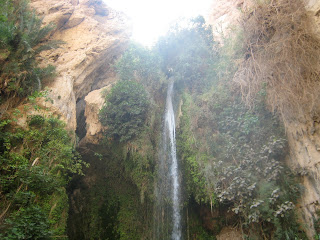We finished the second day by looking into Maktesh Ramon the largest erosion crater in the world.
I honestly prefer the "Don't molest the animals" signs found in US National Parks.
I would add more photos of the crater but they all look the same after awhile.
Yesterday we started our last 11 hour field study of the week by visiting Masada which is where the Jewish rebels made their last stand against the Romans in the late first century. Contrary to popular belief it is likely that the Jews did not commit mass suicide to stick it to the Romans. That is because honorable suicide is forbidden by the law and the rebels were religious zealots and archaeologists found an interior siege ramp built after the main one suggesting that the rebels were massacred. The sight was constructed as a palace fortress by Herod the Great and contains impressive features such as a million gallon cistern to trap the 1 inch of rain that falls on the sight each year. That doesn't sound like alot but 1 inch times half a mile times a quarter of a mile is alot of rain.
Staying hydrated is key.
The cistern
A view from the siege ramp side.
The Snake Path on the Dead Sea side. I instantly regretted not taking the cable car down.
Masada provided a great view of the Dead Sea which is where the field study more or less turned into a field trip. We were given the opportunity to "swim" in the Dead Sea. Even I can float in the Dead Sea which is 35% mineral content compared to Great Salt Lakes 17% and the ocean's 7%. The water feels kind of oily on the skin but leaves your skin feeling very soft. It was wonderful except for some slightly uncomfortable burning in the backdoor area.After the Dead Sea we then headed to the En Gedi springs which according to modern tourist tradition David visited when he was fleeing from Saul as mentioned in 1 Samuel 24. As the name suggests the springs are home to wild Ibex but there are also these little critters known as rock hyraxes. So after a brief intro we were then allowed to climb up and swim in the springs which featured some nice waterfalls.
The Dead Sea as seen from Ein Gedi
Hyrax
En Gedi was followed up by a brief visit to Qumran which is where the Dead Sea Scrolls were found. We then headed back to Jerusalem where we had to get out and walk 30 minutes to campus because the roads were blocked for some two day national holiday.










